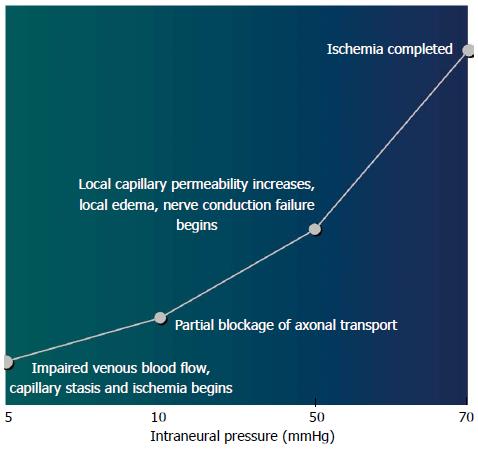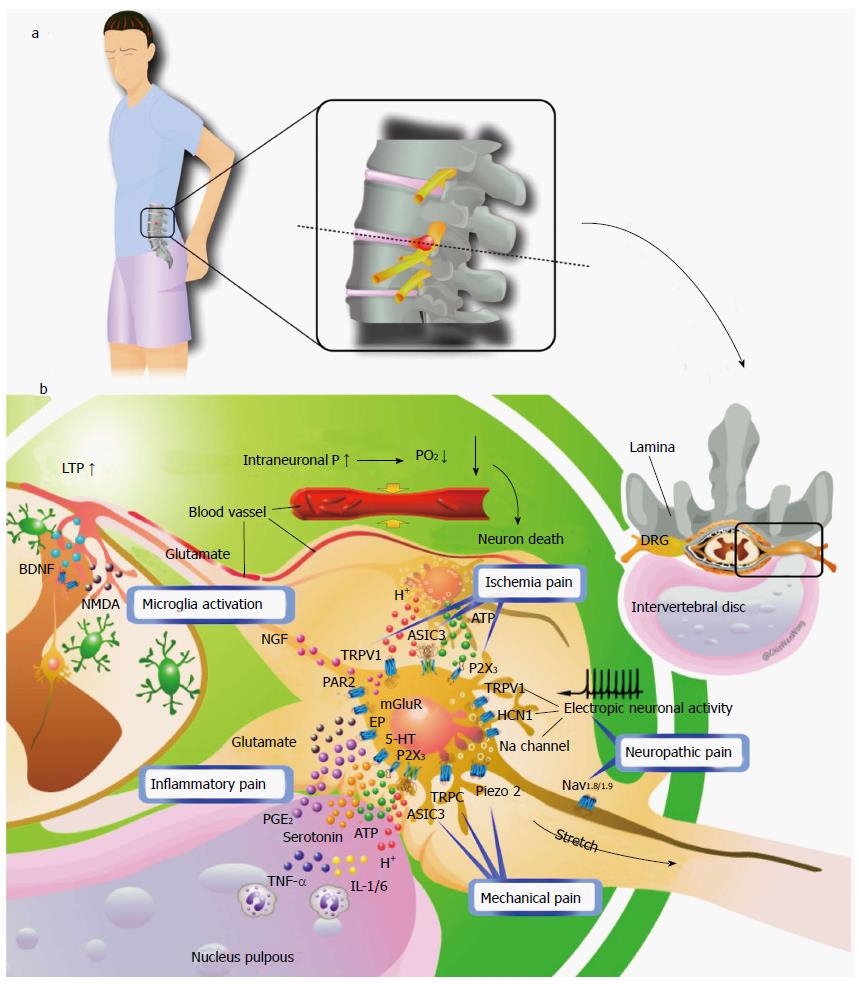Copyright
©2014 Baishideng Publishing Group Inc.
World J Anesthesiol. Jul 27, 2014; 3(2): 162-173
Published online Jul 27, 2014. doi: 10.5313/wja.v3.i2.162
Published online Jul 27, 2014. doi: 10.5313/wja.v3.i2.162
Figure 1 Ischemia changes in the nerve root with increasing intraneural pressure.
Figure 2 The overview of the pain mechanism in lumbar radiculopathy.
1: Mechanical pain, 2: Ischemic pain, 3: Neuropathic pain, 4: Inflammatory pain.
Figure 3 A hypothetical mechanism of lumbar radiculopathy.
(a) The clinical scenario of lumbar radiculopathy in which a lumbar DRG is compressed by a lumbar herniated disc. (b) Lumbar radiculopathy includes multiple pain problems caused by mechanical stress, ischemia, inflammation, and nerve damage. Receptors or ion channels involved in neurosensory mechanotransduction (ASIC3, Piezo2, TRPC), acid chemosensation (ASIC3, TRPV1), inflammation responses (HTR2B, mGluR, P2X3, TRPV1, etc.), and ectopic neuronal activity (HCN1, Nav1.8) may be the key players in transducing the pain. DRG: Dorsal root ganglia; LTP: Long-term potentiation; BDNF: Brain-derived neurotrophic factor; NMDA: N-methyl-D-aspartate receptor; PGE2: Prostaglandin E2; TRPC: Transient receptor potential C; ASIC3: Acid-sensing ion channel 3; ATP: Adenosine triphosphate.
- Citation: Lin JH, Chiang YH, Chen CC. Lumbar radiculopathy and its neurobiological basis. World J Anesthesiol 2014; 3(2): 162-173
- URL: https://www.wjgnet.com/2218-6182/full/v3/i2/162.htm
- DOI: https://dx.doi.org/10.5313/wja.v3.i2.162











